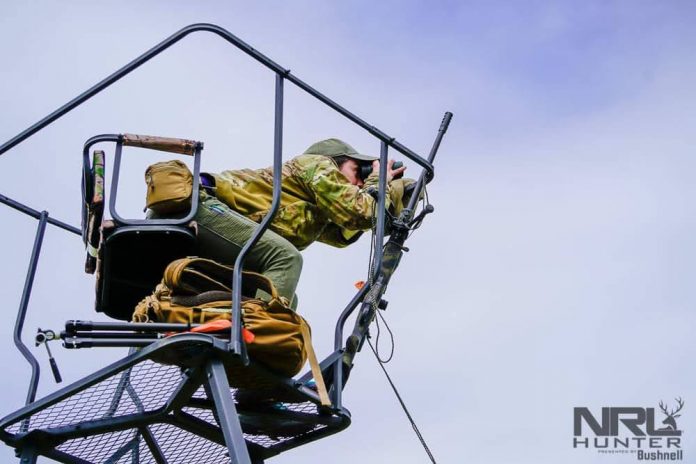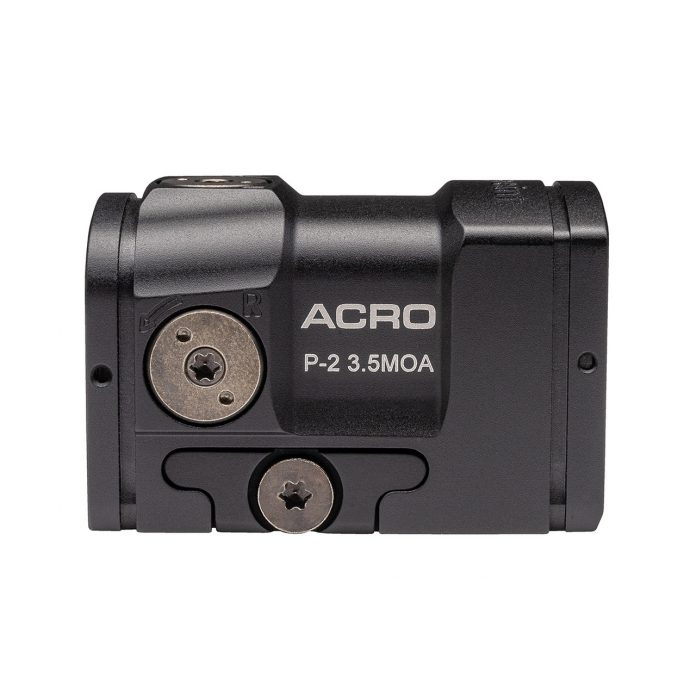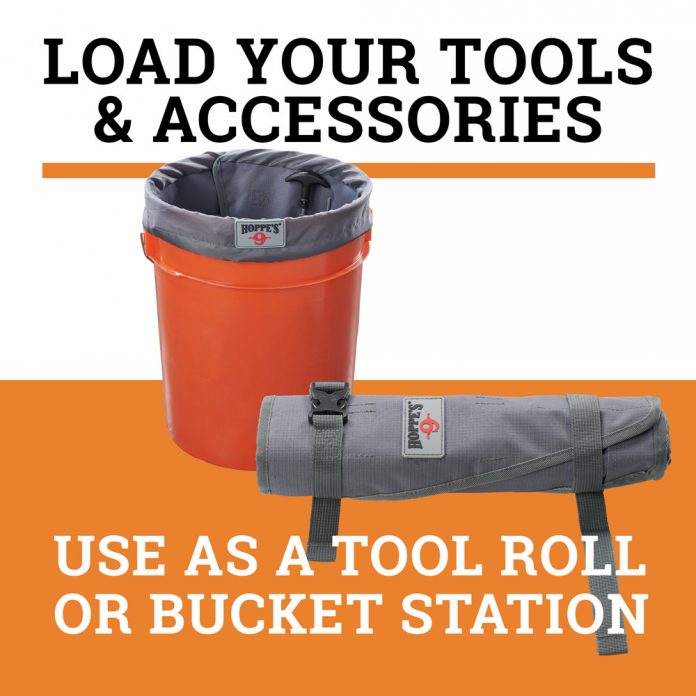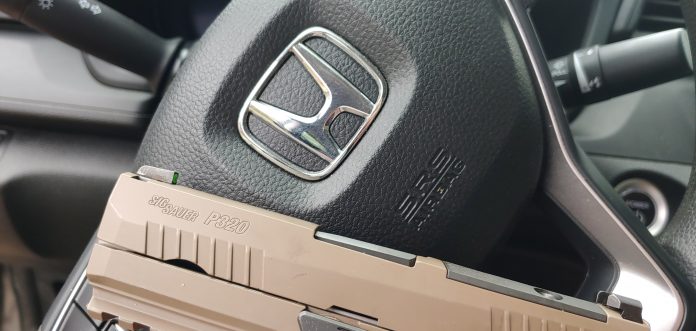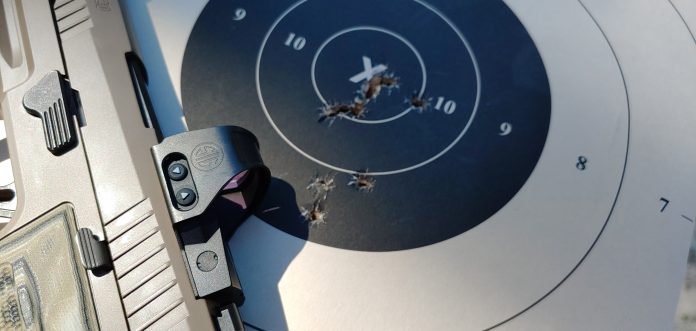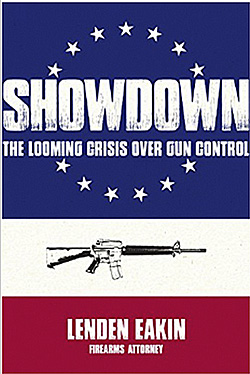In this episode of Gunday Brunch, we address two current events that could have dramatic and long lasting impact on the firearms community. First, the ATF’s new proposed rule that would reclassify some 80% receiver kits as “firearms” and subject them to background checks. Is it bad? Yes. Is it as bad as some of the fear mongers think? No.
Gunday Brunch Episode 2: Are 80% receivers going away? Is the NRA going away?
Women’s Vertx Kesher Ops Pants
Being a woman within the firearms and outdoor community can be tough when it comes to clothing choices. We need items that move with us and don’t hinder the job at hand yet still allow us to feel presentable and attractive. We shouldn’t have to look like a man to do the job of one. The Vertx Womens Lifestyle collection fills the clothing vacancy that we have been so long waiting to be filled. The first article of clothing is the Kesher Ops Pant. A stylish fitting pant that allows you to confidently carry concealed and move around your environment. Two things that most women’s pants don’t allow.
Purpose
Those who know, know, who Vertx makes their clothing for. Those who need to do a job yet stay neutral looking and comfortable. These pants were directly made for austere environments with pockets that are made for the gear you need.
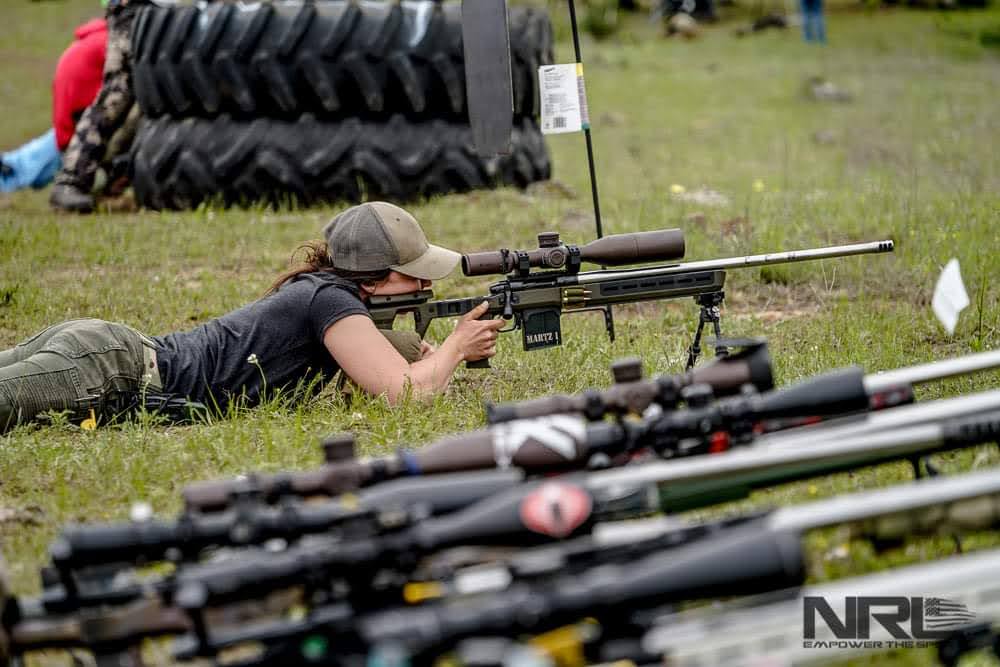
Containing the much loved thigh pocket on each side, magazine/phone pockets in the rear, wallet trap pockets, and breathable deep front pockets, women can finally carry their gear and not have to worry where it goes. The front pockets feature a key ring anchor point if you want to keep your ID or key hidden away yet still have it on the body. They also feature a pass through slot for wires. The waistband features 1.75″ loops and a more reinforced loop under the front belt loop for a lanyard anchoring point or TQ. As far as movement within the pants, the stretch on these pants allow you to bend into any position needed, have the pants stay tight, and still have your rear covered. The Coolmax all season fabric regulates your temperature and allows your body to breathe in hot environments. The colors of Olive Drab and Spine Grey are both neutral colors that put off a look of blending in.
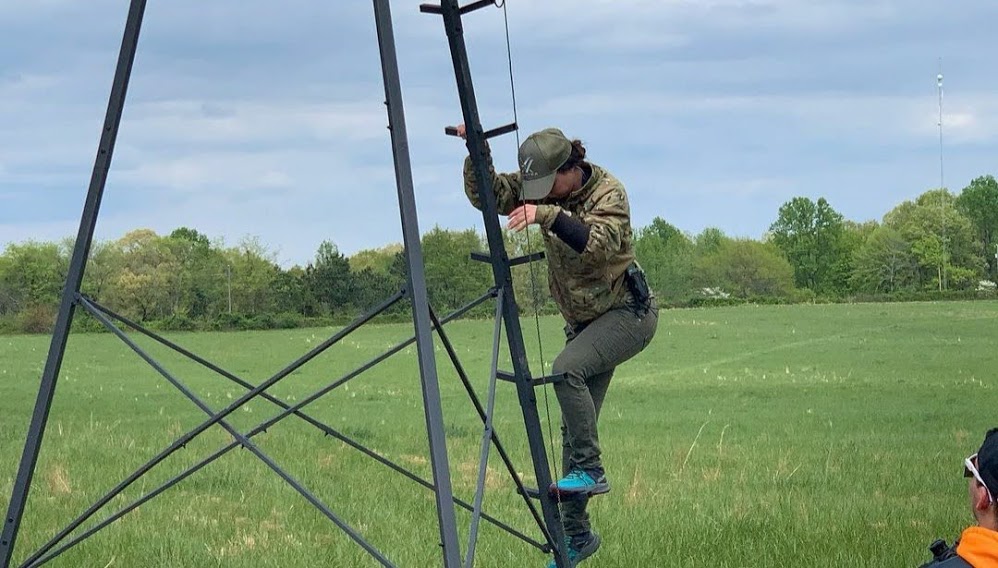
Specs
Options:
- Colors: Olive Drab and Spine Grey
- Sizes: 02, 04, 06, 08, 10, 12, 14
- Inseam: 30, 32, 34
- MSRP $69.99
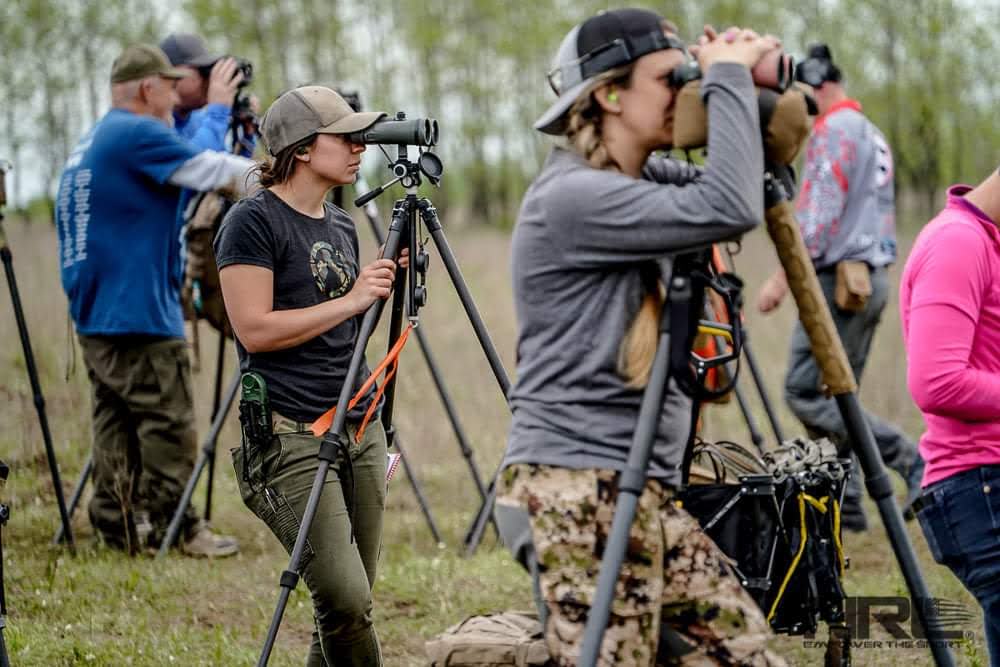
Features:
- 10 pockets keep essential items handy and organized
- Deep front pockets are made of soft highly breathable mesh
- Front pockets have a pass-through slot for comms lead or a RATS tourniquet
- Dual rear yoke pockets fit standard smart phones and rifle mags
- 2 mini stash pockets let you pre-load key items from 1.75 to 2 inches long
- Keyring and lanyard anchor point in both front pockets
- Concealed DropLoop pass-through in each belt loop for flexible restraints or reinforced tether points for lanyards or gear
- Wallet traps in both rear pockets secure gear and prevent pick-pocketing
Construction:
- Modern slim-straight fit
- Brass YKK® locking zipper
- 8 belt loops are 0.5-inch wide and fit up to 1.75-inch belts
- Boot-friendly cuffs
- All heavy-wear seams are double-stitched
- Bar tacks or brass rivets at critical stress points
- 2-way stretch allows for ease of movement while maintaining coverage
- Moto-style thigh pockets conceal stowed gear
Fabric and Technology:
- Stretch 9.25 oz 65% cotton / 22% coolmax polyester / 6% polyester / 6% modal / 1% lycra
- Pre-washed for comfortable feel and natural appearance
- COOLMAX® All Season never washes out and stays cool, dry and comfortable in warm weather and during strenuous activity
Stephanie’s AAR (After Attirement Review)
Note: I am 5’2″, 125 lbs and wear a size 2 with inseam 30
I have worn these pants to work on numerous occasions and to three separate National Rifle League matches to where I am having to move in and out of a lot of weird shooting positions fast. Oftentimes these matches get warm due to shooting outside in the summer, as does working in a vault. Not once did I have an issue with feeling like I was exposed or like the pant couldn’t move with me. Also not once did I ever feel like I couldn’t breathe in the pants or needed to remove them to cool down.
During work I carry my badge, a knife, and pens. The reinforced loop on the waistband allows me to hook my badge to it and continuously pull on the loop during use of my badge without feeling like I will break the loop. The thigh pockets are a perfect place to put pens and forget about them. My knife in the front pocket I had no worries about removal due to the double stitching.
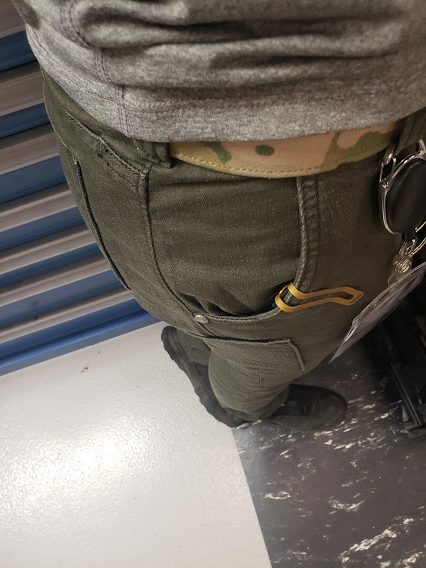
At matches I carry a match book, one magazine on my belt and one in my back pocket, pens and markers, and a kestrel on my belt. Thigh pockets and good rear pockets are a must for precision rifle matches. With the Kesher Ops pant I was able to put both my match book and pens in the thigh pockets for easy access. I didn’t have any worry that the book was going to fall out due to the thigh pocket being deep enough. For the magazines, and maybe my other favorite thing about these pants, the double butt pockets. I am able to put my magazine in the top butt pockets where they stay tight and still have use of the main butt pocket. This pocket is also perfect fit for a phone.
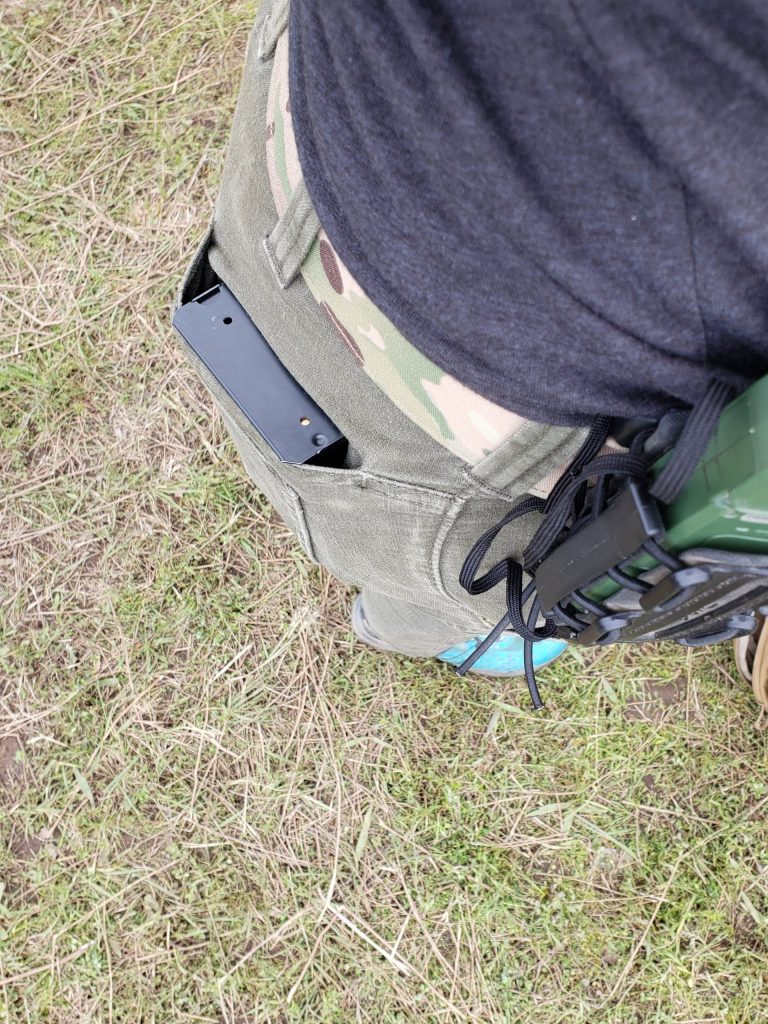
As far as fit and appearance, I finally feel like a woman again wearing these pants. They hug my thighs without giving me muffin top and give me rear coverage but are still low rise. In kneeling and sitting shooting positions I never felt exposed. They also stretched with me both getting in and out of position. I didn’t feel like I needed to pull them up as I bent down and got back up. The leg fit allows me to wear whatever shoe or boot I want due to them not being too tight against my ankle. One thing within the material that I appreciate is the locking zipper. This design ensures that our zipper doesn’t break. The closure button is strong as is the stitching for it so it’s very nice to not have to worry about that ripping. As for a belt, the belt loops are 1.75″ wide. I typically wear the inner belt of the Blue Force Gear CHLK Belt, due to it not having a large buckle or wanting to run the outer war belt and it slides through the loopholes just fine.
Overall the pants fit well, move with me, hold my gear, breathe, are strong, and finally make me feel like a woman when I’m doing things that are the exact opposite of traditional “feminine.”
Aimpoint Launches The Next Gen ACRO P-2
If you want the short, short, short version: They incrementally improved durability aspects and fixed the battery life, back to a more ‘Aimpoint’ level.
More below.
From Aimpoint:
Aimpoint® has once again advanced the standard for pistol mounted optics with the introduction of the Acro P-2™ red dot sight. This next generation sight incorporates an improved LED emitter coupled with a higher capacity CR2032 battery to provide an astonishing five years (50,000 hours) of constant-on power while getting you on target faster and more accurately.
Designed to endure the physical forces generated by semi-automatic pistol slides, the ACRO™ series was the first pistol sight to offer a fully enclosed optical channel to protect the LED emitter. Built to exceed the requirements of professional users, the Acro P-2 has been tested and proven to withstand the extreme shock, vibration, temperatures, and material stresses generated by firing over 20,000 rounds of .40 S&W ammunition.
The new high efficiency LED emitter provides a sharp 3.5 MOA dot. Protective clear glass front and rear lenses guard the advanced reflective lens system. The new digital intensity adjustment keypad provides a more distinct tactile feel when adjusting the dot intensity, and these controls are now placed next to the battery compartment to help protect the power adjustments against unintentional changes.
In addition to use as a primary optic on handguns, the Acro P-2 can be mounted on carbines, shotguns and rifles or utilized as a backup sight on magnified scopes and thermal imagers. The sight can be mounted on a wide range of optics-ready handguns using adapter plates. It is night vision compatible, and the dot can also be turned up for use in bright sunlight.
Aimpoint red dot sights are operationally parallax-free, which means the visible dot remains parallel to the bore of your weapon no matter what angle your eye is in relation to the sight. Therefore, the user never has to worry about centering the dot inside the sight. If you have a proper zero, when the dot is on the target, so are you. Aimpoint red dot sights increase confidence by allowing the shooter to focus on the target while keeping both eyes open, fully situationally aware at all times. Users can achieve first round hits faster with greater confidence.
UNIQUE FEATURES
- 3.5 MOA red dot for precision and fast target acquisition
- Battery life: 50,000 hours (over 5 years) of constant operation with one battery on setting 6
- Battery type: CR2032 battery (battery included)
- Battery can be quickly changed without removing optic
- Variety of mounting options sold separately
- Optimized for pistol and applications which require a low-profile red dot system
- Fully enclosed housing protects all electronic components of the sight from all elements
- Sealed optical channel protects the optic from rain, mud, sand, or snow
- 7075-T6 High-strength Aluminum Hard-anodized
- 10 brightness settings: 4 night vision compatible settings and 6 daylight settings
- 1X (non-magnifying) operationally parallax free optic
- Submersible to 115 feet (35 meters)
- Temperature span -49°F to +160°F
- Weight 2.1 oz / 60 g (sight only)
- Size 1.9” x 1.3” x 1.2” (L x W x H)
A VARIETY OF MOUNTING SOLUTIONS AVAILABLE
The Acro P-2 sight can be used on a wide range of weapon platforms in combination with different mounting solutions developed especially for this ultra-compact red dot optic.
The solutions now available are:
Quick detachable mounts for Weaver and MIL-STD 1913 Rail system/Picatinny rail, a wide range of adapter plates for optics-ready pistols, and an interface for the Aimpoint® Micro mount that allows compatibility with all Micro sights mounting solutions.
Examples of Acro series mounts and adapter plates:
- Acro QD Mount 22 mm, item no. 200517
- Acro QD Mount 30 mm, item no. 200518
- Acro QD Mount 39 mm, item no. 200519
- Acro Adapter Plate for Micro Interface, item no. 200526
- Acro Adapter Plate for Glock Rear Sight, item no. 200622
- Acro Adapter Plate for Glock MOS, item no. 200520
- Acro Adapter Plate for HK VP9, item no. 200521
- Acro Adapter Plate for CZ P-10 C OR, item no. 200522
- Acro Adapter Plate for Beretta APX, item no. 200524
- Acro Adapter Plate for Sig Sauer P320/M17, item no. 200665
- Acro Adapter Plate for S&W M&P, item no. 200523
- Acro Adapter Plate for Walther QR Match, item no. 200578
“It’s past time to stop gun violence” A Fisking
I get a constant stream of news related to the shooting industry. In that firehouse of news are commentaries like this… that amount to mind-numbing shouting full of buzzwords and political point scoring phraseology.
Sounds ‘great’.
Means nothing.
So when these pop up, we ‘fisk’ them. Fisking, for those unaware, is a line-by-line rebuttal of a premise, usually citing data or at least an equally valid counter-opinion to their opinion
From the Alexandria Times:
Bold opening. Strong, impassioned, and vapid. We keep acting like violence is new. That murder is new. That mass killings are new. None of it is new. We as a species have always bore witness to the excesses of violence that we are capable of. Yes, it is tragic. It will be again.
But it was not senseless or needless in the eyes of the perpetrator(s) and that is something we continue to disregard, to our continued stymied efforts at reducing violence. Our opinions on the value of their actions is so much wasted breath. If they cared they wouldn’t have done it.
While gun violence has almost become commonplace in America, the other stark constant is the inaction of the U.S. Congress to enact any meaningful legislation to combat this scourge. Instead, we are left with empty thoughts and prayers from many of our federal elected officials.
What meaningful legislation would you suggest that will curb the minds of people who do not value what you and I do? How do you force someone to value life who does not? How do you pre-penalize an act so horrendous it already shocks the soul in order to dissuade someone motivated to commit so egregious a sin against society?
Despite widespread public support for commonsense gun violence prevention, Congress fails to act time and time again. In the wake of this shameful inaction, many states and localities have seized the initiative and passed legislation to curb gun violence and we all hope these measures will be effective.
Hope… you hope these measures will be effective… How are those hopes working in Baltimore? Oh, they aren’t. They are passing the blame to Virginia though, that’s nice. “Widespread support” is utterly meaningless without a competent understanding of the subject. I am not going to poll the public about heart surgery procedures. I am not going to poll the public about the nuances of international diplomacy. There are a great many subjects on which the public should have absolutely no say whatsoever because they do not hold enough information to form a valid opinion.
The media and politicos capitalize on their ignorance to get “widespread” support of the uninformed. The ‘useful idiot’ is an old tool in this game.
This is the case here in Virginia, oddly the home to the national headquarters of the National Rifle Association, where our legislature and governor have enacted sensible firearm provisions aimed at preventing gun violence. And now, our two U.S. senators, Tim Kaine and Mark Warner, have boldly stepped forward to offer federal legislation patterned after the successful actions of the Commonwealth. And what is striking is their ideas make sense!
Ohhh, “oddly” is an interesting turn of phrase. How have those provisions improved Virginia? Have they done so in any marked way or are they simply the promised payoffs of the spending used to put anti-gun candidates into seats?
And as for the ideas making sense, I shall see.
The Warner-Kaine Virginia Plan to Reduce Gun Violence of 2021 includes popularly supported and sensible provisions such as:
• Universal background checks which close loopholes in federal laws and require background checks for all gun purchases;
Enforcement. Is. Impossible.
Next.
• Limits on purchases of handguns to one per month to limit stockpiling and illegal gun trafficking;
Why is “stockpiling” illegal? Because something bad might happen? Can I lock you up then, sir, because you might commit fraud? You might embezzle money? You might kill someone? How about I lock you up one weekend a month and two weeks during the year at some point just in case you would commit any crimes on those days? It’s not really an infringement on you person, right? It’s a reasonable compromise to prevent crimes that might happen on these days.
As I said earlier (Baltimore article) we a treating symptoms, not causes, and we are treating them poorly. We aren’t shifting demand, we are ineptly attacking ‘supply’ instead. Can a mass shooter not kill with one handgun? Can a trafficker not find a simple work around? These requirement’s don’t influence the felonious activities you are trying to influence.
I hear a lot of condemnation of trickle down economics, with some merit, but this is ‘trickle down illicit arms trafficking’. By continuously harassing the people not trafficking in illegal arms first, you might see some curbing of those trafficking in illegal arms… maybe. The only people who get hit with 100% effect by all these efforts are the law abiding, they take every blow, every violation of their constitutional right, and they must bear the burden because the alternative is becoming an outlaw.
But I’m sure 12 handguns a year is the magic number… even though we already have systems in place to inquire into large purchases or frequent purchases to look for trafficking.
• Requirements to report lost or stolen firearms to local or state enforcement agencies within 48 hours;
Meaningless. Platitude.
Not. Enforceable.
What are you going to do, throw the old man who forgot to call the cops in jail? Fine him because he discovered the gun was missing on Thursday but didn’t get around to finishing a report on it until Monday? Are there any stipulations? Does someone get a pass if their jurisdiction is busy and they can’t take a report immediately?
Why are we criminalizing not reporting a criminal act? Isn’t that victim blaming?
• Promoting safe storage of firearms by gun owners and holding them rightfully liable for leaving loaded, unsecured guns in the presence of a minor;
This is another platitude rule with no teeth. We don’t follow up on all the denials from the NICS system right now, and we want to add criminal liability to a vague ‘safe storage’ violation that can be covered by general negligence? Add an addendum that penalties increase if the general negligence involves the discharge of a firearm and be done. We continuously complicate these items further to seem like we’re “doing something” about gun violence…
• Strengthening of safeguards for victims of domestic violence by closing the “boyfriend loophole” and prohibiting persons convicted of dating violence or stalking from possessing firearms; and
Here’s one… ONE that has some merit. Expanding the definitions of domestic violence to include between intimate partners regardless of if they cohabitated. That has some merit. Good job!
Sexist to call it the “boyfriend loophole” though, bigot.
• Establishment of federal protective orders to temporarily remove firearms from persons who pose a high risk of harming themselves or others.
Due. Process.
If someone is that demonstrable as a risk then it shouldn’t be confiscation of their private property, it should be custody and/or commitment to get that person help and that help should be free of conditions like mandatory firearm removal upon release.
Voluntary removal, certainly. But mandatory removal of arms for a free person is a violation of constitutional rights. If they are that great of a risk, why are free to go about their business? It isn’t as if a legally owned firearm is the sole method they can use to cause harm.
Senators Warner and Kaine should be congratulated for taking action in light of the continuing saga of gun violence, and doing so in a commonsense manner with concepts that are popularly supported by the American people. We are proud of their leadership and initiative.
You are proud that they used all the buzzwords so that you can too. That’s all. The only provision with any merit is the logical shift in the domestic violence provision which covers conviction of non-cohabitant intimate partners, a reflection of modern dating and lifestyles. That’s it. You got one in with an inkling of usefulness that is tied to a criminal conviction.
We can only hope that some of their colleagues will finally open their eyes to the real and stunning concerns of everyday citizens about gun violence which seemingly touch almost every community. Lives are at stake and frankly, it is past time for Congress to act.
-Kerry J. Donley, former mayor, Alexandria
Should I point out that alcohol is a far more deadly threat and kills more people in more communities, but we’re fine with it? Alcohol is considered an acceptable risk consumer product despite being lethal and contributing to violence with a higher annual death count?
But at least the deaths aren’t with bullets?
The “Iron Pipeline”
Just like ‘Ghost Gun‘ the Iron Pipeline is a term used to describe the fact that a demand for illicit firearms in the North Eastern United States receives a supply. The term is used to evoke some dark network of underground flow where guns are simply pumped into New York, Baltimore, and other locales of high demand.
In reality, this is just the straw purchasing. And straw purchasing isn’t taken seriously by federal, state and local law enforcement. Suppliers are rarely held accountable in a meaningful way (oh, certainly there is one or another in the news here and there) and moreover buyers are not held accountable.
If we want ill gotten arms to be dissuaded then we need to dissuade.
The high-capacity handguns fueling Baltimore’s epidemic of violence increasingly enter the city through an underground network of out-of-state traffickers. Can anything be done to turn off the spigot?
This headline is in Baltimore Magazine, it opens with the emotive tale of Kevin Shird, a teen who grew up hard with his parents and siblings, who had been victimized by “gun violence” several times in his young adult life. It’s far from an atypical story for the impoverished inner city youth. And as you can imagine, Shird ended up in a gang. Leading one in fact. They ran a profitable trade in illicit drugs.
Supply. Demand.
It isn’t guns, it is grey and black market economics. These guns are insurance for a business, because you can’t go to an insurance company or call the police to help bolster your security. You aren’t Walgreens or CVS.
But back to Shird’s tale.
“It was all still in their boxes,” says Shird, who later did 12 years for drug trafficking. “We had an endless supply of Berettas, Glocks, 9mm handguns manufactured by Smith & Wesson. It got so you could place orders. Tell him what you wanted. Look, guns have always been easy to get in Baltimore, but if there’s one thing people have to understand, it’s that kids in Baltimore aren’t born with guns in their hands. Guns aren’t manufactured here. There aren’t even any gun stores left in Baltimore City to buy one legally. [There’s one, owned by an ex-cop.] All these guns—the cheap, broken ones, the ones passed around with a body on them, the ones traded for drugs, the expensive ones sold on the black market—they all come from someplace else.” -Baltimore Magazine.
Prohibition tends to Streisand Effect demand. And thanks to Maryland’s hostility towards the Second Amendment, suppliers left. LWRCi is the last major brand in Maryland.
But demand didn’t leave. Black market demand, demand from traffickers and felons who want a security they cannot buy from a company or expect from the Police (for obvious reasons) are still going to invest in it. And where there is demand, there will be supply.
Imagine picking up a mini-fridge that you could then auction off for several times return on investment. That is financially tempting. Sure the fridge might be being used to store something illicit but that isn’t really your problem. You just sold a fridge to some folks who really wanted one because they were hard to get.
That same grey logic applies to firearms, there is a distinct financial incentive to supply a demanded product. “It’s illegal!” generally only holds water for those who are already financially solvent in another manner. Add to that the knowledge that the firearm trafficked will, odds suggest, be used on other criminal organization members far more likely than on kids in a playground (although we know fire is indiscriminate, it simply follows a trajectory) and the grey logic gets even deeper.
Grey logic, for those wondering, is moral ambivalence. It may be “bad” but it also isn’t your problem. You aren’t the cops and the DA is “just gonna let them skate anyway.”
Look at Mr. Shrid’s case. He did 12 years for drug trafficking, not a firearms violation. He is now a vocal advocate, worked with the Obama administration, and a published author. But he notices his neighborhood and gun violence in general remains largely unchanged.
Supply. Demand.
What to do?
Well Baltimore Magazine has the “easy” solution. I’m not even gonna say it.
But the real solution. The solution with teeth, is to curb demand. This combines harsher (but fewer) prosecutions with removing the reasons people need an illegal gun. You can’t eliminate them, but you can blunt them. Decriminalization of a great many ‘victimless events’ and harsh consistent prosecution of events with victims.
This country is lousy at the reintegration part of rehabilitating its convicted transgressors. We are lousy at imposing consistent sentences far harsh criminal offense. We are terrible at helping those who complete sentences, full or reduced, come back into society despite the fact that they have paid the penalty society imposed. All this fuels a greater demand in the gray and black markets because the legal markets denial does not change the demand.
But this this the question they asked instead
It raises a vexing question: How does Baltimore, in a state with some of the toughest handgun purchasing requirements in the country, manage to produce the highest gun homicide rate of any large city in the United States?
Supply. Demand. There is demand and Baltimore cannot shut off supply, it is impossible. They simply choked shut the legal supply for legal residents and the law–abiding, good call. How’s that working out?
The short answer: Nearly two-thirds of guns associated with crime in Baltimore come from out of state. And Maryland overall now has the highest rate of out-of-state crime gun “imports” in the country, according to a 2020 analysis of tracing data from the Giffords Law Center to Prevent Gun Violence. Traffickers today bring nearly three times as many firearms into Maryland as the national state average, playing a deadly role in Baltimore’s epidemic of gun violence.
There is nothing suspect at all about taking the Giffords Law Center’s word… they aren’t biased, I’m sure. But even if that assertion is spot on accurate it illustrates the futility of trying to suppress the problem through local Prohibition, a tactic which has never in history worked. Instead they…
As Shird’s recounting of the North Carolina trafficker makes clear, out-of-state guns have always been illegally sold on the streets in Baltimore. But in the past, out-of-state firearms accounted for a minority of recovered crime guns in Maryland—38 percent, 20 years ago. What’s changed—the unfortunate consequence of the strict gun licensing legislation passed under former Gov. Martin O’Malley in 2013—is that out-of-state guns for the first time represent a majority, a solid 54 percent, of Maryland crime guns traced by the ATF. More than 1,000 crime guns recovered in 2019 traced back to Virginia alone. Another 2,500-plus came from other jurisdictions, including Pennsylvania, the Carolinas, Georgia, West Virginia, and even as far away as Texas.
They only choked out the legal local supply. Not the illegal supply. Not the demand. You must tackle the demand. Which means you must tackle the reasons for the demand. Security.
“We know from the data these guns mostly flow up the I-95 corridor—‘the Iron Pipeline’—because southern states have fewer restrictions on gun buying,” says former ATF chief of crime gun analysis Joseph Vince, a sociology and criminal justice professor at Mount St. Mary’s University. “Take any city that only deals with ‘bad guys with guns’ and spends 98 percent of their time on street arrests—there will always be more guns, and inevitably more ‘bad guys with guns,’ because so many young guys are in the drug trade. It doesn’t mean you don’t arrest everyone illegally possessing a firearm. You do. It means working both ends of the equation. Otherwise, the guns keep coming. This should not come as a surprise to anyone in law enforcement, but it often does.”
Cops are simply cleaning up the results of the demand. Arrests, prosecutions, and middling sentences don’t curb demand either, it just shifts it to whomever fills the vacancy.
Look at it this way. You bought some DogeCoin, a crypto currency that literally started out as a joke. Then, since you were paying attention to DogeCoin, you saw it rise and you made bank on it. Huge multiplicative return on investment. Now you hear of a way that you can consistently get several times return for road trips to Baltimore and make that same ROI. This time it’s not a joke crypto currency, it’s gun running, but the financial return is just as real.
Nobody should be surprised it is regularly done. There is demand, financial rewards for suppliers, and moderate risk. Sure you could go to prison, sure you could get shot by a gang and have the guns stolen, but those are moderate and semi-mitigatable risks. How many traffickers actually get picked up? How many demanding ‘clients’ turn on their suppliers for a short term gain while cutting off a source they need long term?
If Baltimore were curbing supply, we would know. But they aren’t. They can’t. They only succeeded in making the law-abiding’s hoops to ownership crazier and more demanding, the people who weren’t a problem to begin with.
So perhaps shift focus to demand.
Just my .02 on the matter.
Review: ‘Freedom Baby ABC’, by ‘Jane Sharpe’
Freedom Baby ABC is a cute little alphabet learner for children just starting to grasp letters. There are hundreds of these out there, and the twist here is that every letter is illustrated by a firearm-related item or concept. DRGO has reviewed and recommended a number of young people’s books that responsibly introduce terminology and ideas about owning and using guns. (See here, here, here, here and here, unless I’ve lost count.)
‘Jane Sharpe’ (you’d think her real name was actually the pen name) has joined this subset of the literary world with a book directed at the youngest set yet. She designed, wrote, and illustrated it, which earns my admiration regardless of the product. But the product is lovely and fulfills her aims well.
I’ll quote from an email she sent describing her aim that I can’t better: “. . . it’s the first book of its kind. Simple images that will be familiar in any gun-loving home leap from the brightly colored pages. From Ammo to sleepy ZZZZs, parents will love sharing Freedom Baby ABC with their children because it reinforces 2A values to the next generation.” Yes, it is, they do, and we will.
The content includes mostly hardware of various kinds, but the software that may be even more important is also highlighted. These include concepts about “Duty”, “Freedom”, that “Guns are tools” and “Never to be played with”, and the security and reassurance of knowing your parents are armed and you are protected. These are ideas one hopes more and more children will grow up with rather than the modern illiberal belief that families with firearms are dangerous. She draws their attention to them well with bold, bright colors.
I do wish she’d found a way to work in “Second Amendment”. That’s a far more important foundation for a growing child than a “Sight” picture (though “Safety” matters sooner). Maybe in a second edition she’ll add the numerical digits to her basic literacy characters for these newest of newbies. The occasional duplication of words beginning with the same letter also feels a bit awkward, since most pages use only one. There’s something to be said for consistency in teaching little kids, whether using one word per page or several so they can explore multiple ideas on every page. Quibbles, each.
Finally, we should acknowledge that DRGO agreed to provide a blurb for the back cover: “Doctors for Responsible Gun Ownership knows that education about gun safety and our rights cannot begin too early. Freedom Baby ABC is a lovely way to introduce toddlers to the alphabet and to firearms along with the rest of their world. Add it to your bookshelf and enjoy it with your child!”
And that’s exactly what we mean. Pick it up (it’s not heavy), share it, and you’ll enjoy it along with your future range buddies.
.
.

— DRGO Editor Robert B. Young, MD is a psychiatrist practicing in Pittsford, NY, an associate clinical professor at the University of Rochester School of Medicine, and a Distinguished Life Fellow of the American Psychiatric Association.
All DRGO articles by Robert B. Young, MD
Hoppe’s Releases Ready Roll Gun Cleaning Kit
OVERLAND PARK, Kan. – May 20, 2021 – Hoppe’s, the No.1 name in gun care products, has unveiled its new Ready Roll portable gun cleaning kit. This kit can be used in multiple configurations, either unrolled onto a flat surface like a shooting bench, or as a bucket apron for shooters who like to carry their range gear in a five-gallon bucket. The kit wraps around the inside of a bucket and is held in place with an integrated draw cord.
The Ready Roll kit is designed to keep cleaning tools at the ready and easy to transport. The kit features MOLLE elastic webbing to hold cleaning tools like rods and bore brushes, as well as small bottles of Hoppe’s No. 9, oil and more. Additional pockets can be used for storing patches and other cleaning equipment.
The entire apron kit easily rolls into a compact package, making it the perfect way to transport gun cleaning gear to and from the range or field. Constructed with heavy-duty rip-stop material, it’s designed to stand up to heavy use no matter where a gun owner may need it.
“The new Hoppe’s Ready Roll was designed to be the ultimate storage solution, offering easy transportability and convenience,” said Laurie Kokoruda, senior product manager for Hoppe’s. “Whether its used as a rollup kit or placed inside a bucket as a portable cleaning station, the Ready Roll can be used multiple ways and helps keep your gear accessible whenever needed.”
The Ready Roll cleaning kit is available in two options, either as a stand-alone kit ($34.99 MSRP) or as a pre-loaded kit with Hoppe’s gun cleaning tools included ($52.49 MSRP). To learn more about the Ready Roll cleaning kit or to see other Hoppe’s gun care products, visit Hoppes.com.
About Hoppe’s
In 1903, Frank August Hoppe mixed nine chemicals and created the world’s most effective gun cleaner. As a well-trained young soldier, Frank knew that gun care went far beyond just a clean rifle, but actually helped to ensure his safety while on the front lines of battle. Since that time, Hoppe’s has emerged as the leading gun care company, having grown along-side hunters, shooters and soldiers who depend on their firearms every day. It has remained the most trusted name in gun care by advancing and evolving technologies to meet those needs. From the ever popular and versatile No. 9 and the quick and easy BoreSnake, to the marvel of efficiency we call Gun Medic, Hoppe’s is the only name you need to know for firearm cleaning and protection. For more information, visit www.hoppes.com, connect on Instagram at www.instagram.com/hoppesguncare/ or on Facebook at www.facebook.com/hoppesguncare.
Road Rage and Concealed Carry
I live in the great state of Florida, and we happen to be the capital of road rage. I blame it on all the tourists coming to visit. Clearly, it’s y’all who can’t drive, and you bring that famous north eastern anger with you. Regardless, road rage happens to the best of us, well, if not road rage, road anger.
Everyone meets a lousy driver or a good driver who makes mistakes. Being cut off, tailgated, or not allowed to merge will drive anyone crazy. Something about being stuck in a small tin can and someone else creating a dangerous situation fills the best of us with rage. When you’re (legally) packing a piece, you have to give up your rights to road rage.
No More Road Rage For You
Heck, you need to give up your rights to road anger too, or even road ticked off. Specifically, what I mean is that you cannot do all the typical road rage actions. No blowing your horn, no rude hand gestures, no lowering your window, and yelling. All of that goes out the window when you’re carrying a firearm. Do a Dennis Reynolds and express your anger to yourself and your steering wheel.
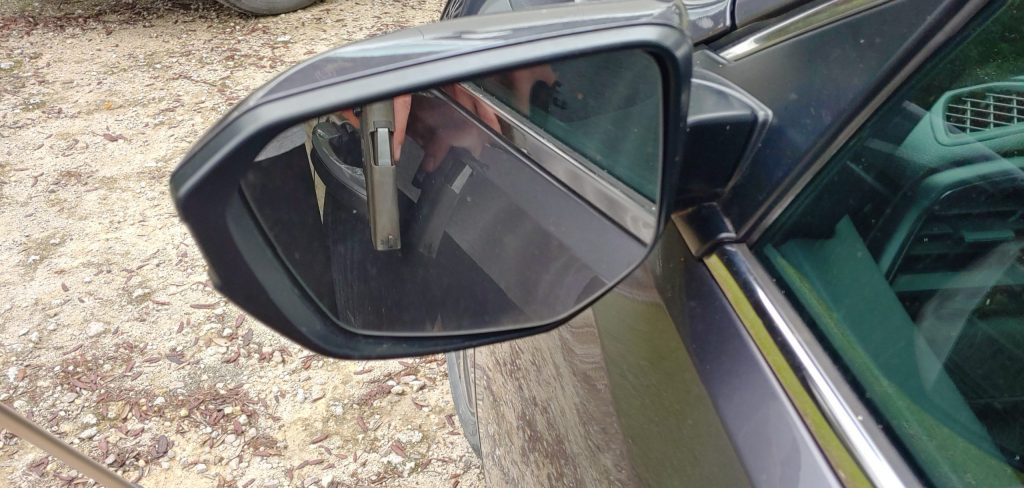
Road rage spreads like the coronavirus, and your reaction to another idiot driver can devolve quickly into a dangerous battle of will… and ego. These road rage situations can become violent. Violent road rage is way more common than you’d expect—more than once, it’s turned into a gunfight.
As a concealed carrier, your firearm isn’t there to settle scores; it’s to protect your life. If you express road rage that becomes violent, you’ve introduced a deadly weapon into the mix. This could create a legal and moral issue with you being in the wrong. Your ‘right’ to road rage goes away when you express your right to carry a firearm.
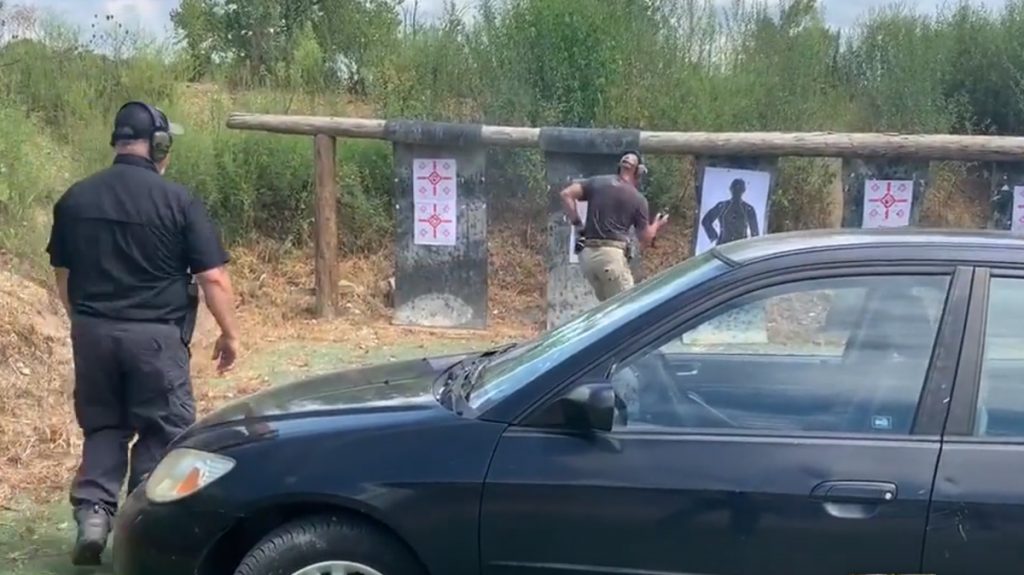
Get a stress ball, breathe deep, pull over and take a minute, blast DMX and rap your anger away. Do whatever it takes to achieve a little inner piece.
Dealing With Road Rage
Let’s flip the situation and put you in the crosshairs of someone who can’t rap their way out of road rage. Maybe you cut someone off by mistake, or maybe you did something someone interprets as rude, or maybe you did nothing. It doesn’t matter once someone starts expressing their reign of road rage on you.
First, if someone begins to aggressively follow you, be prepared to call the police. If they are practicing some extreme tailgating or even swerving at you trying to run you off the road, you need to get on the phone and call the police. Do not meet their aggression with aggression. Don’t yell, utilize rude hand gestures, or flash your gun.

Maintain a safe speed and attempt to maintain a safe distance from the road rage enthusiast. I would never advise you to pull over and just stop. That opens you up to a violent and dangerous encounter.
Most people on the road are just trying to get somewhere, so appeal to that if possible and safe to do so. Move to the right lane and slow down if safe to do so. Going below the speed limit slows down the person following you and may cause them to disengage and go on their way. People who experience road rage likely do not want to slow down. Slow also typically equals safer, especially when you are jacked on adrenaline.
Taking a Left
Taking an exit or making a turn may also diffuse the situation. If people want to get where they are going, they are unlikely to take a side trip to keep harassing you. Yet, exercise caution. If they are truly enraged, the last thing you want to do is stop at a red light or stop sign and give the road rage enthusiast an opportunity to personally engage with you.
Do not lead someone to your home in an attempt to escape them. The road rage situation may occur a mile from your house, but that doesn’t mean you lead them to your home. Drive past and away from them. If they are that dedicated to following you and harassing you, then drive to a police station or next to an officer pulling traffic duty.
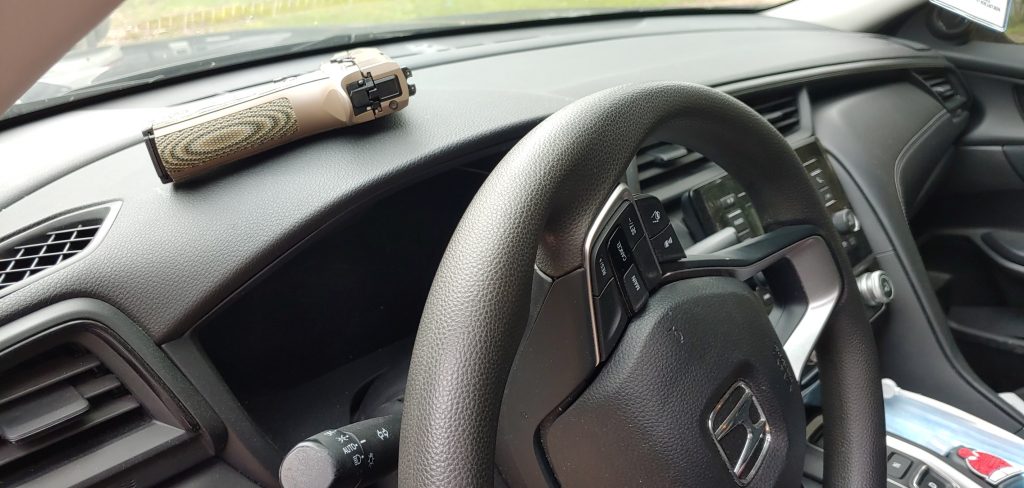
Blow your horn to gain attention, but do not leave your vehicle until officers arrive. If that’s not enough to end the situation, you now have law enforcement on the scene to deal with the issue.
Attacked On The Road
Everything went to hell! You’ve found yourself stuck between a rock and a road rage driver. Your vehicle is stopped, and the road rage driver pulls beside you or has exited their own vehicle. If possible, to do so safely, escape. Ditch the scenario and get out of there as soon as possible.
If you’re pinned in and approached, be apologetic, even if you never did anything wrong. Do not roll down your windows farther than necessary to speak, which is not very low, and ensure your doors are locked. Show empathy and understanding if possible, but be ready to respond to violence with violence.

If attacked, obviously exercise your right to defend yourself accordingly. At this point, you’ll be wishing you took a class on fighting from a vehicle. Most of us spend a healthy amount of time inside a vehicle, so it’s wise to invest in a class that focuses on road rage encounters and in-vehicle self-defense. Shooting in and around a vehicle effectively takes training and practice. You’d be surprised how quickly a vehicle starts to feel like a prison when you try to maneuver and fight inside it.
Parting Shots
A dashcam can do wonders for your self-defense case. Front and rear dash cams provide a visual representation of the event and can help explain your actions when self-defense comes into play. More so than that, they can capture the actions, the color, and even the tag of a vehicle committing illegal actions towards you in a road rage scenario.
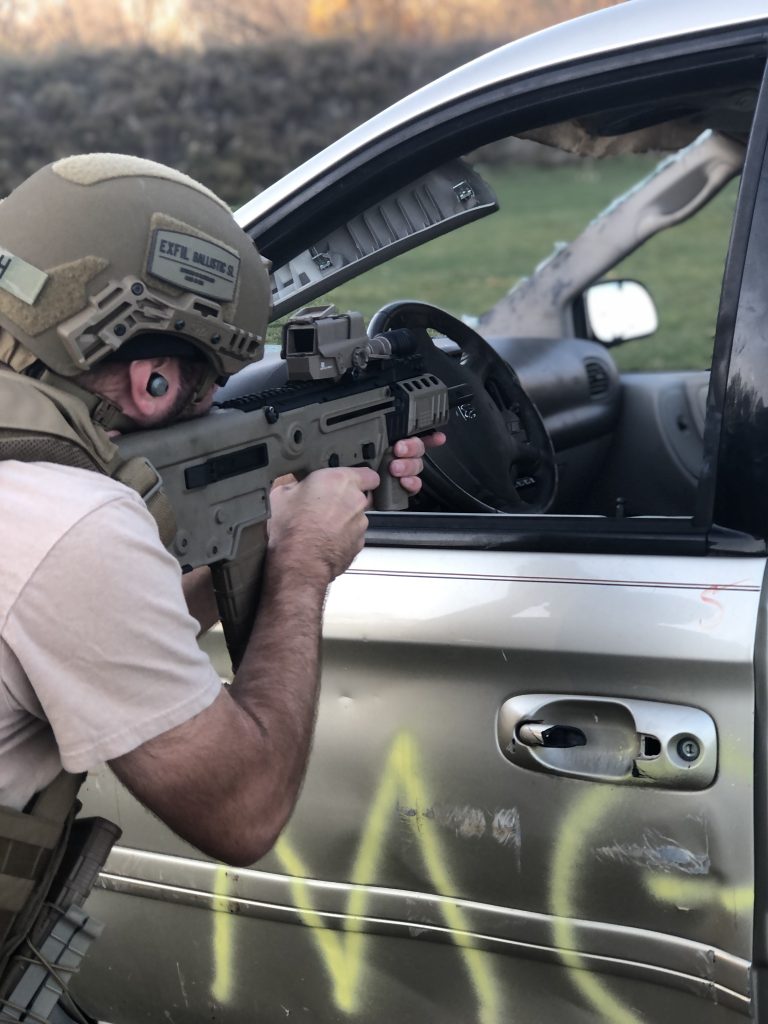
Road rage situations are like any other crazy guy on the streets issue. Deescalate, disengage, and escape if you can safely do so. No need to pick a fight or return anger with anger. It won’t end well, and you owe it to yourself and your family to take the safe way out of the situation.
Be smart, exercise caution, pay attention while driving, and get some vehicle training. I’m trying to line up my own in-vehicle training for the year too, so maybe I’ll see you there.
Revolvers don’t jam
One of the most commonly quoted misconceptions about wheelguns is that “revolvers don’t jam.” This is based on the correct idea that because a revolver is entirely mechanically driven, it’s more tolerant of neglect than a semi-automatic pistol. You pull a lever, it rotates a cylinder, and everything happens.
The problem with stating that revolvers don’t jam is that it’s not true. A “jam” is common language for a stoppage, and there are two types of stoppages. The first is a failure of the gun to complete the cycle of operations. In a semi-automatic pistol this is usually a failure to feed, or a failure to eject/extract, or a dud round. The fix for all of those is the same: a basic immediate action drill. Revolvers can’t have failures to feed, but they can have light primer strikes. Since the solution for a light primer hit in a wheelgun is to pull the trigger again, that helps feed the idea that “revolvers don’t jam.”
But what about when they do? The most common failure point in revolvers is something insidious: unburnt powder. Something so small as a flake of unburnt powder under the extractor star can suddenly make your revolver impossible to shoot, and it’s a failure that’s happened to me at least three times that I can recall. The fix for this is to take a toothbrush and brush out under the extractor star, which is a lot more complicated than a simple “tap rack bang” drill.
Similarly, other failures in revolvers are usually parts breakages or screws backing out, all of which require tools to fix. So it’s not that revolvers don’t jam, it’s that when they do go down, they tend to go down hard. Needing tools or a toothbrush to get your gun back up and running isn’t ideal, which is why I don’t treat revolvers like I treat a semi-auto pistol. I basically never clean my semi-auto pistols, but revolvers I clean pretty religiously. Remember: revolvers are tolerant of neglect, not abuse.
Best O/U Scatter Gun under $1,000?
One of the most common questions I receive as a professional gun writer/ reviewer for the NRA is: “What’s the best inexpensive over/under shotgun?”
Plenty of folks want an over/under for skeet and clay games where these guns dominate in popularity. Others just want a do-all shotgun that looks a little classier than a camo-dipped 870 pump, but they don’t have $3,000 for a Beretta Silver Pigeon or Browning Citori. Turns out, most people who ask me this question are expecting to pay less than a grand. After all, they can get a sub-inch rifle, an AR-15 or a top-end handgun for less than $700. So they’re often surprised–and sometimes even slightly offended–when I recommend they consider saving their beans until they can at least get into the $1,500 range. Most sub-$1,000 over/unders I’ve fired (with the possible exception of a few recent CZ models) do not hold up as the shooter progresses. Although at first glance many of them look ok, they feel rough, handle like a 2×4 and their mass-produced aluminum alloy parts tend to wear like a lawnmower belt. In sum, they’re just plain cheap.
But in 2020 I walked into an Academy store (an excellent sporting goods chain in the southern U.S.) and saw a darn-good-looking over/under shotgun on the rack for $699. So I asked to hold it, because I was as skeptical as a scientist at a magic show. I was surprised at the Yildiz’s initial feel, features and small details such as checkering and wood-to-metal fit. But I’ve had my heart broken before, so months later I asked to test it. What follows is a review of one model, the steel-receiver SPZ ME Sporting HPS, and an answer: What’s the best over/under shotgun for less than $1,000. Hell, this one is less than $700!
The SIG Romeo1Pro – SIG’s Big and Handy MRDS
Dear SIG Sauer, why do you hate spaces. I feel super awkward typing Romeo1Pro, but that’s how you want to spell it. The new Romeo1Pro took the older Romeo1 and pushed it to be tougher, brighter, and easier to use. SIG made some subtle changes to the Romeo1. The changes were enough so that the older Romeo1 mounts are not compatible with the new Romeo1Pro. SIG’s M17 and M18 series of handguns were designed to accommodate a DeltaPoint Pro from Leupold, and SIG wisely decided that the Romeo1Pro would match the DPP footprint.
What’s New With the Romeo1Pro
The new Romeo1Pro fits DPP footprints, and fits perfectly on the M17/M18 series, the X series P320s, and all Pro-Cut slides. After GAT Daily Editor, Keith Finch, chastised me for not optically enhancing my SIG AXG Scorpion [Editor’s note: Seriously, I did.] I knew exactly where to attach my Romeo1Pro.
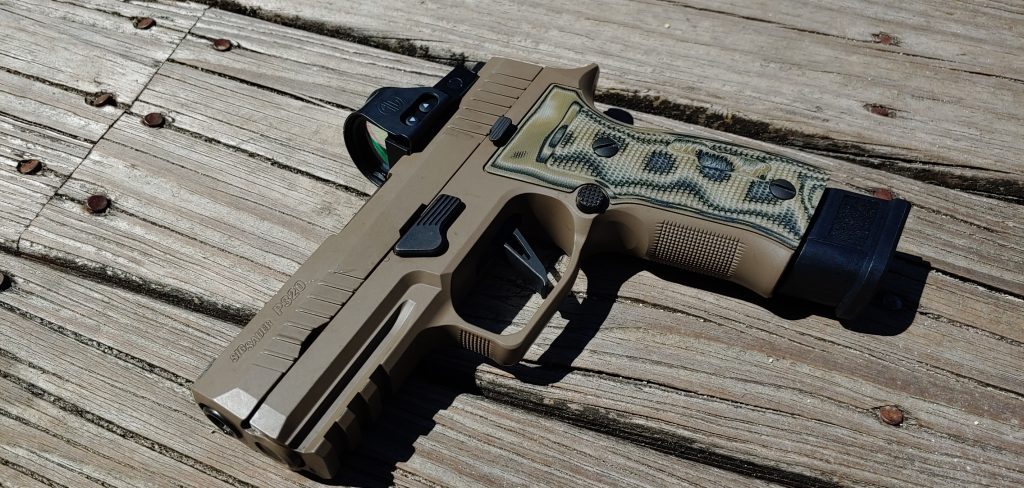
I strapped that bad boy on and applied a little Loc Tite to the screws. A top-loading 1632 battery ensures I don’t have to remove the optic to change batteries. Battery life tops out at 20K hours. To help preserve the battery life, the optic is infused with SIG’s MOTAC technology. When left still for two minutes, the optic will shut off automatically. However, as soon as it feels motion, it snaps back on.
It’s been lying on my table as I write, and for the longest time, I thought the MOTAC wasn’t working. Then I realized the vibration and slight movement caused by my typing is enough movement to keep it on. You can’t grab it fast enough to see any delay in the reticle springing to life.
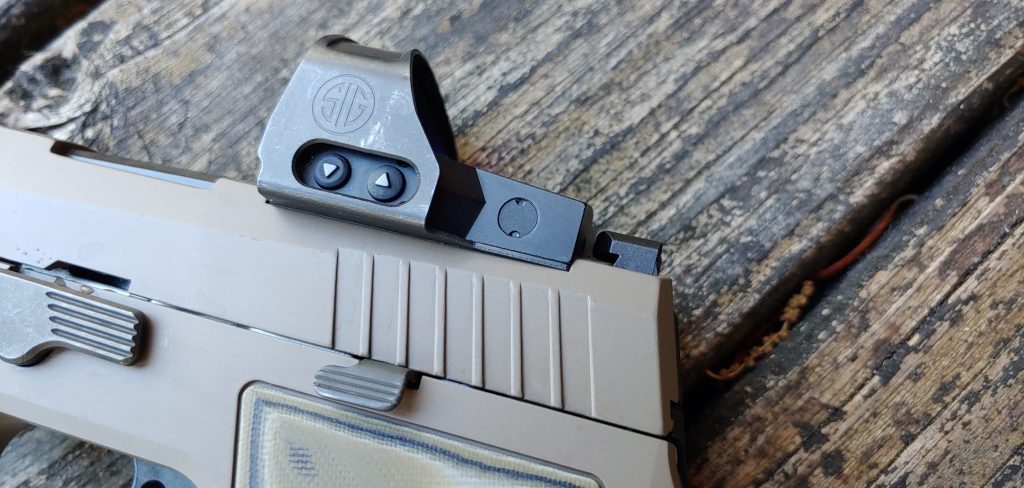
On the left-hand side, we have two small buttons that control the optic. Users get ten daylight brightness settings and two-night vision settings. You can pick between a 3 or 6 MOA red dot. Mine is the smaller 3 MOA model.
…and my Shield
The Romeo1Pro comes with a steel shield that fits around the optic for an optional higher degree of protection. I chose to use this steel shield since I’m often banging my holstered firearm on this and that as I run to and fro. A little extra protection does a body good.
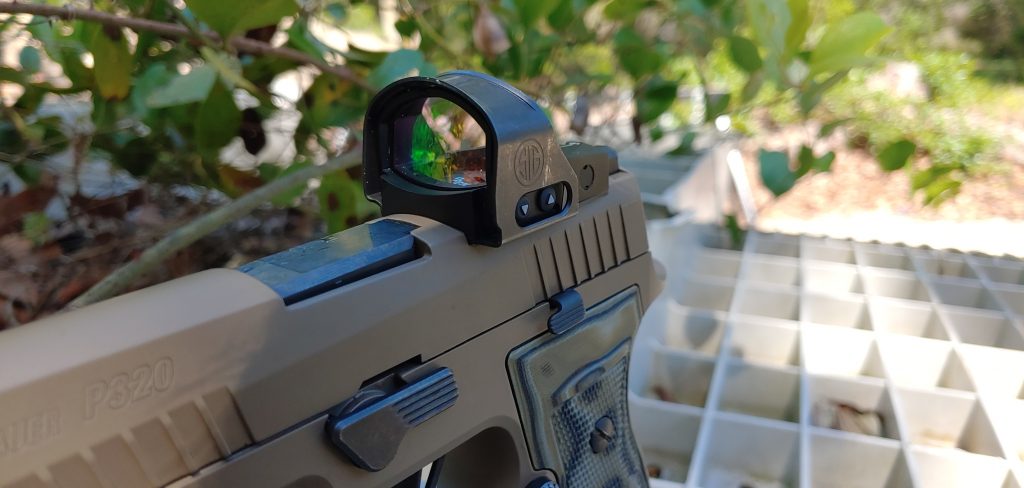
That being said, the shield makes it a lot tougher to hit the optic’s buttons. I have to reach in and use the tip of my finger to make brightness adjustments. It’s not something I can do on the fly, and it takes a very dedicated motion to do so. I have big hands and sausage fingers, my wife’s more petite hands have no problems hitting the buttons, so it might just be me.
That Big Bright Dot of the Romeo1Pro
The Romeo1Pro provides a very bright dot. The new ‘point-source’ emitter provides a freaking bright reticle. That 3 MOA dot gets more than just daylight bright, it’s like white sand beach bright. Brighter than I’ll ever need it to be, even in the sunshine state of Florida. When you hit the brightest setting, the dot blinks five times to let you know you’ve made it to the top.
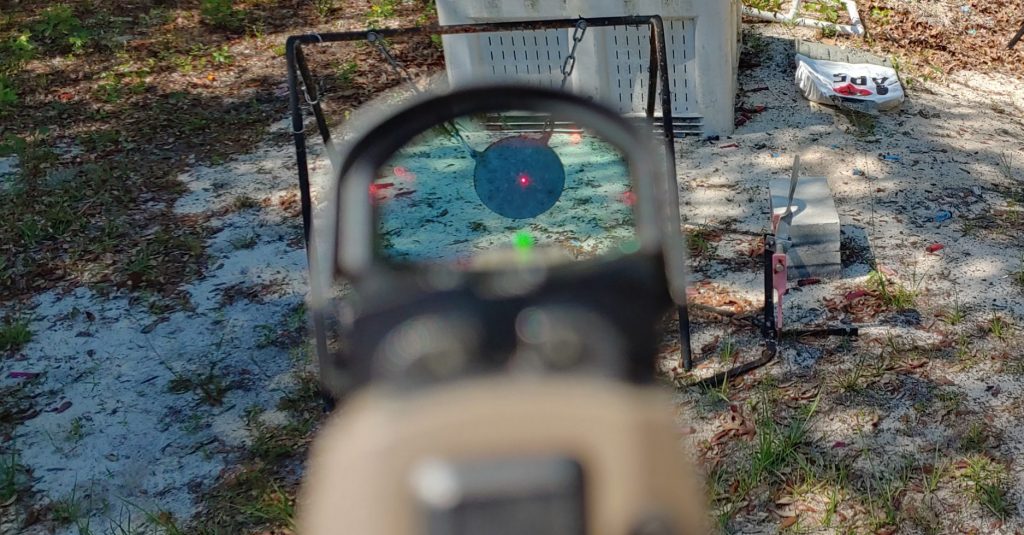
The rear of the optic features a sight channel which is nice, and once I get a new suppressor height front sight, it will allow smooth co witnessing. Looking through the Romeo1Pro reveals that big wide window we loved the Romeo1 for. A 30mm viewing window provides one of the largest mini red dot windows that I’m aware of. It’s massive, and a massive window makes the dot easy to find.
We also have a noticeably blue tint applied to the optic’s window. I used to think this was a clarity flaw, but I saw Aaron Cowan explain that the blue tint helped make the dot brighter while preserving battery life. It must have certainly helped the Romeo1Pro provide 4x the battery life of the Romeo1.
In Action
After a quick zero of the Romeo1Pro, I started with one of my favorite drills, the 10-10-10 drill. You can read about that here, so I don’t have to explain the whole thing. I’ve shot the 10-10-10 drill quite a few times and have gotten rather good at it. This was the first time I’ve shot it with the dot and with the SIG AXG.
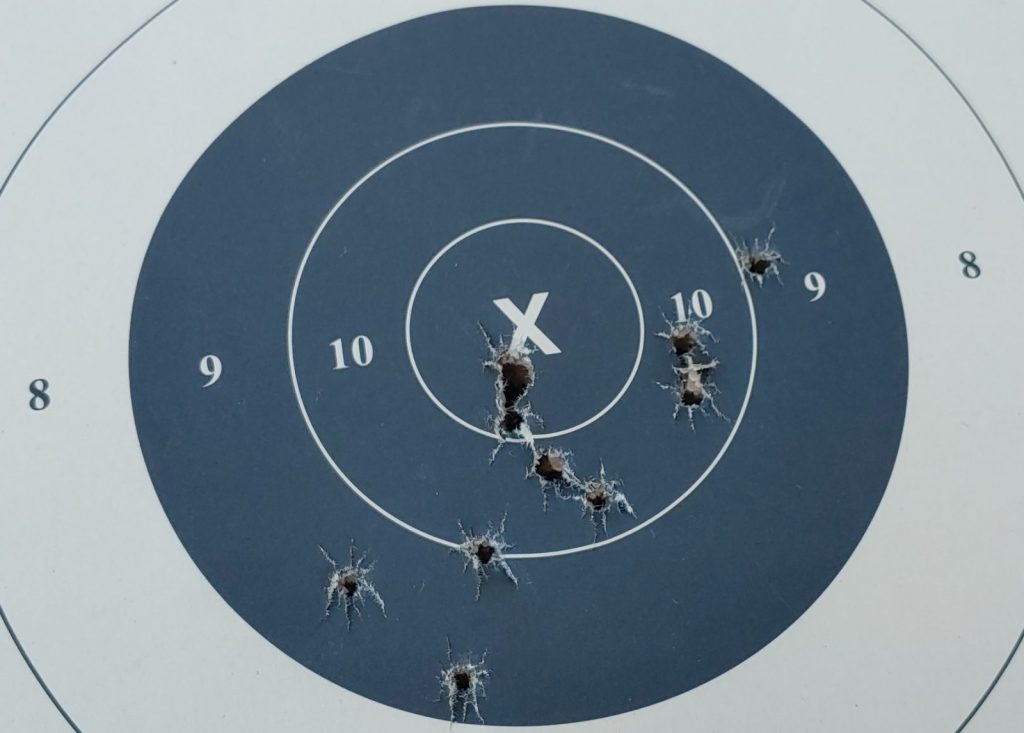
I ran it as fast as possible for my first run. Every round stayed in the black and scored a 5.67 par time. This is the fastest I’ve ever run the drill, and I’m not surprised since red dots make handguns so much easier to shoot fast.
It opened up my group a bit, and if I slowed down, I could be a bit more precise and did just that. My next run landed me a 6.49 time with 9 out of 10 in the X or ten ring and only one in the nine ring. I love red dots on my handgun, and the Romeo1Pro delivers the performance a handgun red dot needs.
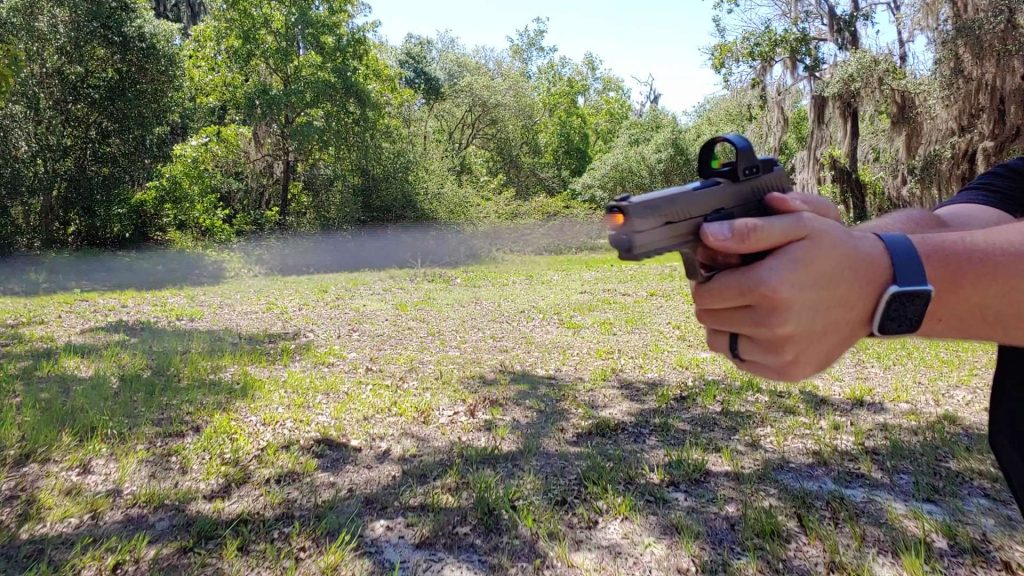
Even my slowest time was faster than my best time with iron sights and even more accurate.
At 50 yards I set up a B8 target. I fired five rounds in the standing position slowly and precisely. Could I have done better? Sure, but I feel satisfied with landing every round in the eight ring. Red dots on handguns make it so much easier to hit targets at these longer handgun ranges.
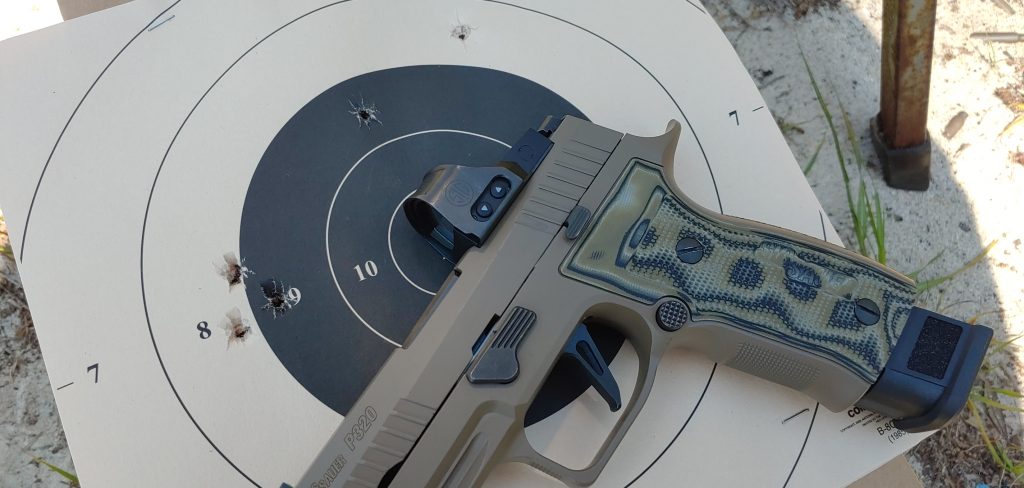
Upping the Round Count
I spent the rest of the day firing a wide variety of ammo types. We hit a few drills, fired from behind cover, and practiced one-hand and off-hand engagements. I blasted away at a round of dot torture and really love using a red dot for dot torture.
It’s so much easier to shoot Dot Torture clean with a red dot. At this point, we need a red dot variant of dot torture with dots half the size. The Romeo1Pro’s 3 MOA dot steers between dots and ensures you hit those two-inch circle-shaped bastards with ease.
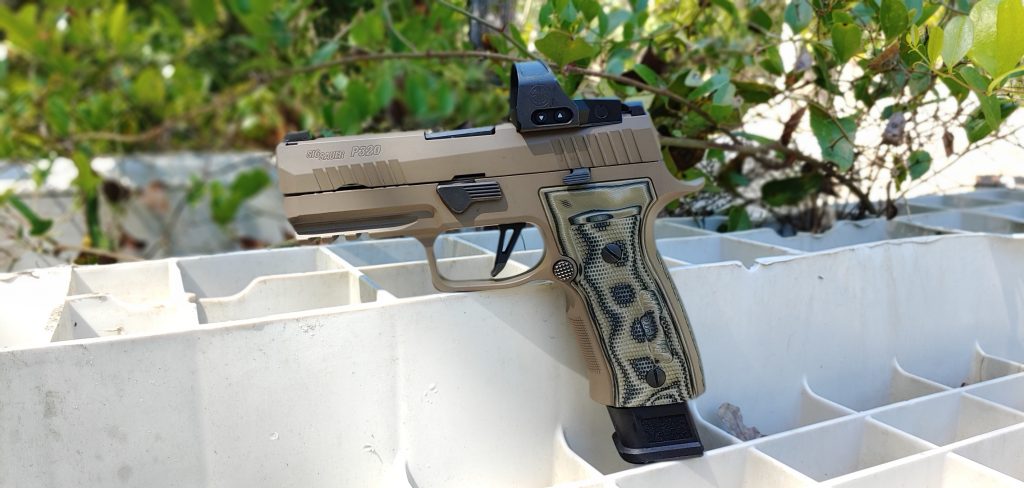
After the next few days, I decimated plenty of paper, rung lots of steel, and watched my stash of 9mm slowly dry up as I got hundreds of rounds in. I’m almost out of steel cased 9mm at this point.
Down and Dirty With the Dot
Romeo1Pro dot appears super crisp, and only appears to starburst when the setting gets super high. I see zero stutter when transitioning from target to target as rapidly as I can. The dot doesn’t blur as it moves and stays crisp and clear. A crisp and clear dot allows for precision shooting, and lesser dots appear less like dots and more like stars.
Some cheaper dots stutter as you transition and kind of drag like a laser pointer. There were zero issues with reliability. The dot never turned off or stutter-stepped due to poor battery connection.
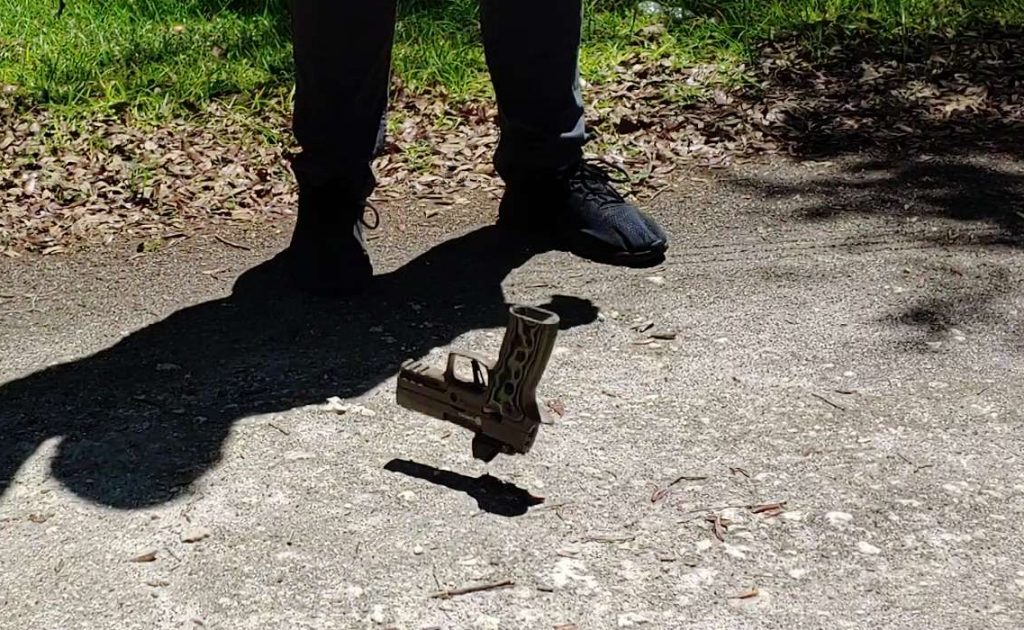
I even dropped it several times from shoulder height onto limestones. The finish didn’t even scratch.
The Romeo1Pro is a very worthy successor to the Romeo1. SIG seems to be intending this optic for the competitive market and their new American-made Romeo2 for the duty and concealed carry realm. This massive optic does its duty dilligently. It’s a big boy and seems well suited for rapid-fire transitions and small target engagement. It’s one helluva nice optic, and it will be living a permanent life on my AXG.
Did the Founders Blow It?
I write this on the occasion of the 47th Vice President’s1 Executive Order regarding “gun” “control”2. I anticipate that my readers would expect me to excoriate him and his ilk and denounce them as tyrannical, ill-informed, and a threat to our nation’s foundational principles. All of these points are true, but they aren’t going to be the focus of this piece. The current “administration” will surely pass, but the diseased thinking that underlies its plotting will persist absent strong medicine.
The diseased thinking I have in mind is, sadly, of the Founders’ creation. Perhaps my title is unfair—certainly nothing I write will stand the test of time nearly as well as their creation did. Before I take pot shots at the Constitution and the Bill of Rights, let me be clear that it is the most successful framework for government ever created. Notwithstanding that achievement, I believe that we are at this point in history because of critical errors the Founders made and for which we are now paying dearly.
The first of the Founders’ oversights related to one of the greatest challenges every writer faces: communicating in such a way that their written words convey the entirety of their message and sufficiently capture the relevant context such that their message can stand alone. This is an aspirational goal that can at best be approached but never fully achieved. The Constitution and the Bill of Rights suffer in this regard because they do not capture the sacrifice of lives and fortunes in service of escape from tyranny. It is impossible for modern Americans to conceive of years of bloody warfare on our soil to resist the dictates of a foreign crown. Because if we couldd, we wouldn’t give up one single ounce of the rights they secured for us.
The authors of the 47th Vice President’s executive orders (hereafter referred to as the puppet masters)3 regarding guns bring us to the second of the Founders’ critical errors. The puppet masters chose his words very carefully, and the reason they did is that they too see the diseased thinking, and rather than cure it, they want it to fester to their advantage. Biden said:
“But no amendment—no amendment to the Constitution is absolute.”
There’s a slight of hand here so deft that unless careful attention is paid the rest of the nonsense seems to flow logically enough. Of course, “amendments”, taken literally, mean the written words are not absolute. So why say this?
The puppet masters realized that the Founders blew it in naming the Bill of Rights, their second consequential oversight. It should have been titled something more accurate, albeit unwieldy, like “The List of Absolute Restrictions on Government So That Your Inalienable Rights Are Forever Secure.” This critical error allows people to believe that the words of the Bill of Rights, created by people, are what “give you your rights.” This is made worse by two modern problems. First, our society has drifted away from any meaningful attachment to a Creator who endows us with our rights. Second, wrapping one’s head around the constructs of “natural rights” or “inalienable rights” requires a capacity for abstraction that public education avoids imparting at all costs, leaving people without any conceptual basis to argue otherwise.
If this gets you to read this then my job here should be done. I think that article is both sufficiently catchy and lethal to the diseased thinking about rights that it could be the catalyst to taking our rights back. I’d be remiss however not to comment on one particular focus of Biden’s Executive Order.
“Ghost guns” is the confiscationist term for guns made by their owners from components after personally drilling holes in one of the parts (the “lower receiver”) so that the components can be assembled. No background check is required because the ATF (so far) defines a “gun” as the serialized receiver. But since it was purchased “unfinished” (i.e., without the holes) it didn’t become the “gun” until the holes were drilled.
If any of this troubles you, consider the alternative: your right to self-defense would require absolute reliance on the commercial purchase of the implements of that right. No other natural right works that way because it is antithetical to any conception of liberty. The puppet masters’ obvious goal is to deprive you of the ability to arm yourself outside their watch. It’s certainly not about crime because privately assembled guns are almost never used criminally. Interfering with the home manufacture of guns, combined with universal background checks, would give our authoritarian Lords the ability to make a registry of guns for potential confiscation.
Although we must fight these efforts through our representatives at every level of government, we shouldn’t overlook the fact that the right to self-defense is enjoying increasing respect throughout the states, as noted here. I share that author’s optimism that we shall overcome.
Notes:
- I’d rather not debate the legitimacy of Biden’s Presidency, or whether he has the cognitive capacity for the job (or any job for that matter), nor would I assert he isn’t my President as certain people did of the previous one. I prefer to stick with the inarguable and just as regrettable fact that Joe Biden was the 47th Vice-President of the United States.
- “Gun control” actually means purposefully using guns safely and is well described by the training offered by the National Rifle Association. “Gun” “control” is my way of denoting nonsense by confiscatory leftists that has nothing to do with “controlling” “guns” but has everything to do with controlling you and me.
- Please consider the full import of Joe Biden reciting the phrase “salute the Marines” as he passes them by in this clip before challenging the puppet master assertion.
.
.

–Dennis Petrocelli, MD is a clinical and forensic psychiatrist who has practiced for nearly 20 years in Virginia. He took up shooting in 2019 for mind-body training and self-defense, and is in the fight for Virginians’ gun rights.
All DRGO articles by Dennis Petrocelli, MD
Review: ‘Showdown: The Looming Crisis Over Gun Control’ by Lenden A. Eakin
[Ed: Although this book is a few years old, it was prescient anticipating today’s fight for the life of the Second Amendment as written and our right to keep and bear arms. Dr. Faria’s review was published earlier at Hacienda Publishing March 29, 2021.]
Showdown: The Looming Crisis Over Gun Control by Lenden A. Eakin (Mascot Books, 2014) is more than a book about the politics of gun control in the United States. It is a concise narrative not only about “the looming crisis over gun control” but also a clear and concise tome explaining the relevance of military firearms, “assault weapons,” the militia, and the Second Amendment in modern society. Eakin, a Virginia attorney and avid shooter with over thirty years experience in gun laws, an Army National Guard veteran and personal protection instructor, weaves the narrative effectively into eight succinct chapters.
The book is engaging because it is written based on well-conducted research and the perspective of Eakin’s experience in the National Guard, not to mention his expertise with firearms. Eakin is very familiar with early guns that were used or issued in the American military, from the matchlock and flintlock muskets of colonial times to the lever action rifles of the Western frontier (e.g., the Models 1886 and 1895). In the 20th century, he describes the development and use of the bolt action rifles, the Springfield 1903 and Enfield 1917 of World War I, and the Thompson Submachine Gun, the M-1 Garand, and the M-1 Carbine of World War II, as well as the modern M-16 service rifle (i.e., M-4 for the compact model and the AR-15 for the civilian semiautomatic version) of the present age. Most of these firearms from the late 19th and 20th centuries are still functional today and used in little known government sponsored training and competition programs. (p. 157-160)
Many military rifles, such as the 1918 Browing Automatic Rifle (BAR) and the FN/FAL, of which the civilian semiautomatic version is the R1-A1, use the standard .308 Winchester (7.62 NATO). Others use the .223 Remington (5.56 NATO) ammunition, such as the M-16, of which the civilian semiautomatic version is the AR-15. The .308 caliber offers longer range and greater penetration capabilities, as Eakin relates, but has significant recoil. The .223 caliber is lighter, easier to carry, and has less recoil. These two types of ammunition are also commonly available in the civilian market. (p. 151-152)
Eakin’s tome provides one of the clearest constitutional and legal definition and subsequent description of the evolution of the militia from its inception in the American tradition to modern times that citizens can find in any book. The militia has not disappeared into thin air or become irrelevant or obsolete, as asserted by gun control activists. Eakin makes it clear that while in modern times the “organized militia” has evolved into the National Guard — in which he served and indeed has been federalized by acts of Congress — the general militia is the body of the people capable of bearing arms, using the same type of firearms as those commonly used in the military. The general militia is still relevant and needed for individual self-defense and home protection as well as providing for the common defense, such as in the mass of the people aiding government forces in the case of large scale terrorism or homeland invasion, particularly when large portions of the U.S. Armed Forces and National Guard are engaged elsewhere; and in defending constitutional government and preventing the inception of tyranny at home.
Another interesting facet of the book actually relates to “the looming crisis over gun control” in 2013 and 2014, during the second term of the Obama administration. Eakin builds to a crescendo of suspense as he describes the concerted Democratic effort, strongly supported by President Obama, to pass Senator Dianne Feinstein’s ill-fated “Assault Weapons Ban of 2013.” They failed. Undeterred, the Democrats vowed to renew their effort and encouraged by President Obama hoped to make gains in Congress in the 2014 midterm election to resume the gun control push. The book leaves us in suspense as it was published in 2014. What subsequently happened was that Obama and the Democrats suffered a devastating and humiliating defeat. The Democrats lost 9 U.S. Senate members losing their majority, going from 53 to 44 seats, and losing 13 members in the House of Representatives going from 201 to 188 seats. The drubbing extended to governorships and the state legislatures. These loses may have helped paved the way for the presidential victory of Donald Trump in 2016, despite the predictions by pollsters and the cheerleading of the mainstream media for Hillary Clinton.
Most ironic to recent developments in the judiciary, in particular the contentious but successful appointment of Brett Kavanaugh as Associate Justice of the U.S. Supreme Court on October 6, 2018 by a close 50 to 48 vote, is the fact that it was Obama who apparently pressured Senator Harry Reid (D-NV) and the Senate Democrats in November 2013 to successfully push for the “nuclear option,” that is the use of a simple majority (51 rather than 60 votes) for confirmation of appointments to the U.S. Supreme Court. Obama reportedly wanted to make the federal judiciary more flexible to the executive branch in upholding gun control laws. (p.127-130)
I also found of interest the salient discussion pertaining to “fear of violence and active self-defense” in which Eakin described several scenarios beside the obvious fear of street crime, home invasions, mass shootings, and natural catastrophes. He described other national emergencies in which citizens may have to act individually or collectively to defend their homes and communities, end lawlessness, and restore order. These included the possibility of indirect nuclear war by third-world nations impacting the United States. He writes:
“Local devastation from nuclear war does not require an attack on America. ‘Research by Dr. Ira Helfand shows that limited use of nuclear weapons, such as a nuclear exchange between India and Pakistan, could cause widespread crop failure and worldwide famine.’ ” (p. 48) This devastation would result from radioactive dust clouds and fallout, despite the fact the nuclear explosion occurred elsewhere in the world.
Likewise, rogue nations, such as North Korea or in the near future Iran, could launch a destructive pre-emptive strike against the U.S. Eakin asserts, “A single nuclear detonation above North America would cause a catastrophic electromagnetic pulse (EMP) that would cause long-lasting electricity blackout.” An EMP could damage the electric grid and destroy the functioning of infrastructure in communication, finance, contaminating food and potable water, severely endangering America. Chaos could potentially result in lawlessness, looting, riots and violence, worse than what we have experienced during natural catastrophes. Citizens would be, at the very least, required to help government forces in restoring order and provide protection for their own families and communities. The same would be true for a major terrorist attack. (p. 49-51)
In short, if the reader is looking for an introductory tome to the topic of firearms and the politics of gun control, Showdown: The Looming Crisis Over Gun Control is a good choice. This book also provides clarification of certain heretofore murky topics, such as the historical development of military rifles in the U.S. Army, the meaning of militias, the role of the Army National Guard in the modern U.S. military, and the real reason why the Founding Fathers included militias and the right to keep and bear arms in the Second Amendment of the Bill of Rights. I highly recommend this book to gun enthusiasts as well as those genuinely interested in gun violence prevention while recognizing and respecting the right of others to armed defense in protecting themselves, their families, their homes and their communities.
.
.
— Miguel A. Faria, Jr., M.D. is a retired professor of Neurosurgery and Medical History at Mercer University School of Medicine. He founded Hacienda Publishing and is Associate Editor in Chief and World Affairs Editor of Surgical Neurology International. He served on the CDC’s Injury Research Grant Review Committee.
All DRGO articles by Miguel A. Faria, Jr., MD
New Burris Optics Products for 2021
Burris Optics delivered 8 new products in January ’21!
The Burris Thermal Riflescope (BTS) in 35mm and 50mm.
The Burris Thermal Clip-On (BTC) in 35mm and 50mm.
The Burris Thermal Handheld (BTH) in 35mm and 50mm.
The Oracle X Rangefinding Crossbow Scope.
The Oracle 2 Rangefinding Bow Sight.
The Burris Thermal Scope allows you to flip through 10 different reticles with the push of a button. The 4-power zoom, multiple color palettes and hot tracking options sets the bar high for feature rich night hunting optics.
– – – – – – – – – –
The Burris Thermal Clip-On lets you turn up the heat on your favorite riflescope. Go from standard to thermal in just seconds with our simple adapter or use it as a handheld for added mobility.
– – – – – – – – – –
The Burris Thermal Handheld allows you to Hot Track targets out past 750 yards so you can quickly find heat signatures in the dead of night. Real time wifi-to-mobile connection allows others to view, control and record the handheld from a mobile phone!
– – – – – – – – – –
The Oracle X features a modern, lightweight design with 2-7x variable power magnification that can handle any weather conditions you might experience and is backed by the Burris no questions asked Forever Warranty. It features 200 yard rangefinding, angle compensation, wireless remote, and both auto and manual brightness controls. Expected retail price is just $899 with models available for purchase in June ’21.
– – – – – – – – – –
Burris Optics is proud to introduce the new and improved Oracle 2 Rangefinding Bow Sight. The Oracle 2’s design is based on all the customer feedback we got from the original Oracle and includes: Improved Auto-Brightness Detection, Improved Manual Brightness Control (lower levels), Improved Set-Up (micro-adjustments on LRF), better waterproofing and more accurate arrow drop calculations. The function is still the same… range your target at full draw with the push of a button. The Oracle 2 instantly provides the distance to your target and an exact aiming point that factors in the angle of your shot. No more guessing distance, fumbling with rangefinders, dialing sights or aiming between pins. Expected retail is just $799 with models available for purchase in June ’21.
– – – – – – – – – –
Learn more about the Oracle 2 Bow Sight here:
www.burrisoptics.com/bowsights/oracle/oracle-2-rangefinding-bow-sight
To learn more about the entire line of Burris Optics please visit: www.burrisoptics.com
Burris Optics, based in Greeley, Colorado, has been an optics innovation leader for nearly 50 years. The company produced its first optics in 1972 and was the originator of the ballistic plex design employed by every hunting optics manufacturer since. Every optic produced by Burris is designed, engineered, and tested in our Greeley, CO facility.
The Stoner 63 – Eugene Stoner’s Other Gun Design
Eugene Stoner was an absolute genius. The AR-15 and AR-10 pattern rifles he designed have been more successful than nearly any other rifle design in history. Eugene Stoner didn’t stop there and he continued to create guns until he died. He worked for various companies, including Knight’s Armament, and Cadillac Gage. Stoner went to Caddilac Gage in the 1960s with a new design in hand, that new design being the Stoner 63. I’d like to say Stoner 63 rifle, or Stoner 63 machine gun, or Stoner 63 carbine, but I can’t.
Limiting it to just one type of firearm would be an inaccurate description. The Stoner 63 was unlike any weapon we’ve ever seen then and pretty much since. Eugene designed the Stoner 63 to be all of those things. It would be one gun to do it all, one receiver that could accommodate an extremely wide variety of configurations.

It was 1962, and Eugene had sold the AR-15 design to Colt and moved on to new and greener pastures. He worked with Cadillac Gage to bring the Stoner 63 to life. Initially, we had the Stoner 62, which was a 7.62 NATO version of the weapon. They decided to move to the 5.56 cartridge because it was becoming readily apparent that the little 5.56 round was seeing worldwide adoption. Thus the Stoner 63 came to be in 1963.
The Stoner 63 – At Its Core
At its core, the Stoner 63 is a long-stroke gas piston system, capable of both semi and fully automatic modes, and utilized the 5.56 caliber round. Other than that, everything else was on the table depending on the Stoner 63’s configuration.
Immediately the design got some eyes on it. The Army and Marines both wanted to test the design. The Army put it through a series of trials that forced an unreasonable expectation of ammunition on it. They wanted it to function with ammo that was too underpowered to function even in an M16, continuing their history of bad ammunition choices.

After months the Army sent back their recommendations. The Army wanted a two-position fire selector with separate safety, a stainless steel gas cylinder, modifications to the belt feed mechanism, and ejection port dust covers. Cadillac Gage and Eugene Stoner obliged, and the new models were designated the Stoner 63A.
All The Many Faces of The Stoner 63
Rifle and Carbine
The standard rifle variants feed from a bottom-located magazine. The magazine resembles an AR magazine but is proprietary and rocks in and locks like an AK47. This was necessitated by the lack of a magazine well. Capable of both semi-automatic fire and full-automatic fire. The rifle wears a 20-inch barrel, and the carbine uses a 15.7-inch barrel.
Automatic Rifle
The Automatic rifle version places the magazine on top of the gun, much like a Bren gun. The sights are offset to the side, also like a Bren gun. The gun functioned off an open bolt and was full auto only. The Marines tested it in 1967 and quickly discarded it as a concept.
[Editor’s note: They discarded it as a concept then, but look at the IAR and tell me we didn’t circle back to the magazine fed auto-rifle concept.]
Light Machine Gun
The Stoner 63 saw the most success with the light machine gun variant of the gun. The light machine gun version feeds with a belt and fires from an open bolt configuration. The LMG variant utilized a 75, 100, or 150 round drum to contain the belt of ammo. The LMG featured a quick change barrel as well.
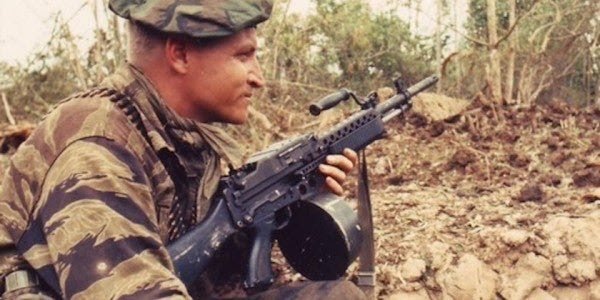
Medium Machine Gun
I put ‘medium’ in quotations because a 5.56 machine gun isn’t necessarily a medium machine gun. The light machine gun became the medium machine gun when it was fitted with an M122 tripod adapter.
Fixed Machine Gun
This variant was also a light machine gun, but the buttstock and pistol grip are cast away. The fixed machine gun uses a solenoid to fire it and would be mounted to defensive positions and on vehicles. If you ever wonder why the Stoner 63 has a hole in the trigger, it’s to accommodate the solenoid for remote activation.
Commando
The Commando variant is what happens when you add a shorter but heavier barrel to the LMG variant that is not quick-change capable. The Commando variant saw lots of action with the Navy SEALs in Vietnam. Stoner trimmed the barrel to 15.7 inches, and we saw a good amount of weight reduction.
Survival Rifle
The Survival rifle variant never left the prototype phase and featured a short carbine barrel, a trimmed-down pistol grip, a folding stock, and very simple sights.
How Did It Work?
The Stoner 63 system utilized a common receiver that could be configured to various configurations. Armed forces could use a weapon like a rifle or a carbine, or convert the receiver to a belt-fed design for a light machine gun role, or remove the stock and pistol grip and toss it on a vehicle. They could do all of this with one common receiver.
To be clear, this system was not field serviceable. Trained armorers configured the weapon as needed by the force wielding them. There were several spare parts, and we know how fast Joe could lose small parts in the field.
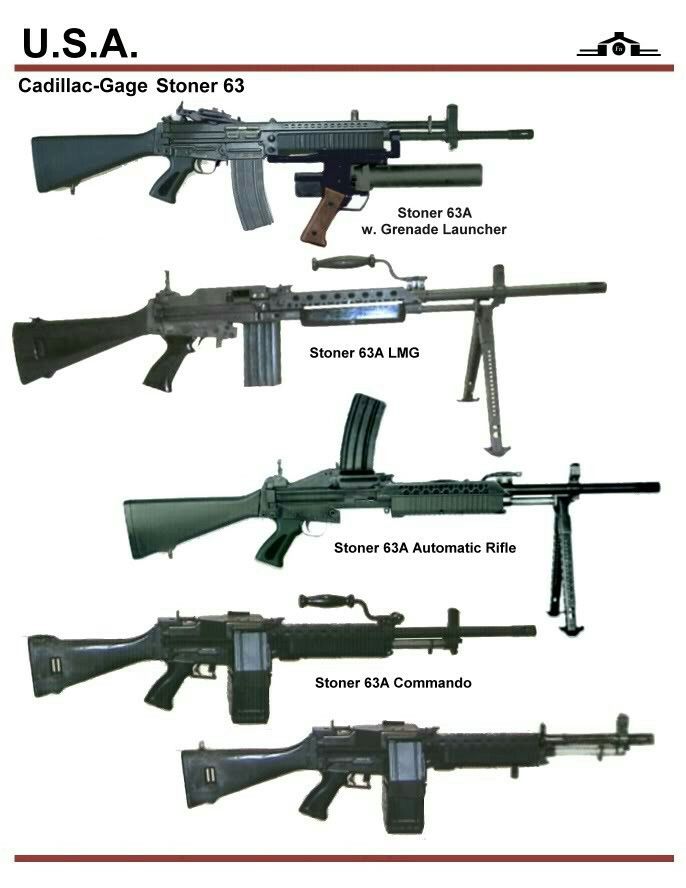
The key to the Stoner 63’s design was the fact you could flip the receiver one way or another to accommodate different configurations. When you convert a magazine version to belt-fed, you flip the receiver over to do so. Sights are removed and replaced with trigger groups, the LRBHO is removed to accommodate a belt, and various fire control groups allowed you to change how the Stoner 63 functioned.
Simple and Ingenious
The trigger and fire control groups are rather ingenious. It’s a complete trigger group that pops on and off. It’s not small parts you are forced to install one by one. Instead, you just swapped complete trigger groups, which took no time at all. Stoner designed one trigger group to function with a closed bolt rifle or carbine variant; Stoner configured the second for open-bolt machine guns.
When swapping between closed and open bolt variants, you also make some slight tweaks to the bolt carrier and piston group. A small piece at the end of the device must be in a particular position dependent on the operating mechanism. All armorers needed to flip was this small oddly-shaped square-like part at the rear of the piston to allow for open-bolt or closed-bolt firing.

When armorers flipped this device, it changed how the bolt operated with the hammer-fired rifle trigger group and the open bolt trigger group. The firing pin configuration changed as well. In the rifle setting, it free-floated. In the open bolt setting, the firing pin locked into a fixed position.
Ergonomics Varied
Multiple charging handles were produced for the Stoner 63. One universal design sat on the left-hand side when utilized as a rifle and on the right-hand side when utilized on a machine gun. Over time a vertically mounted charging handle was adopted to sit on the top or bottom depending on the configuration and what the user desired.

Most used a top charging handle, but the SEALs adopted a bottom charging handle and modified charging handle for the MK23 machine gun variant. Numerous stocks allowed for fixed or folding designs, and any shoulder-fired variant could use either stock depending on user or unit preference.
Did the Stoner 63 Succeed?
Marines brought a couple hundred Stoner 63s to Vietnam. According to Forgotten Weapons, they brought 27 machine guns, 12 carbines, and 135 rifles. The machine guns varied between the automatic rifle and belt-fed variant. They quickly discarded the automatic rifle version because they found it rather useless.
Their testing found the Stoner 63 to be somewhat finicky and reliant on lots of maintenance and lube to run. Marines found it finicky, but SEALs loved it.
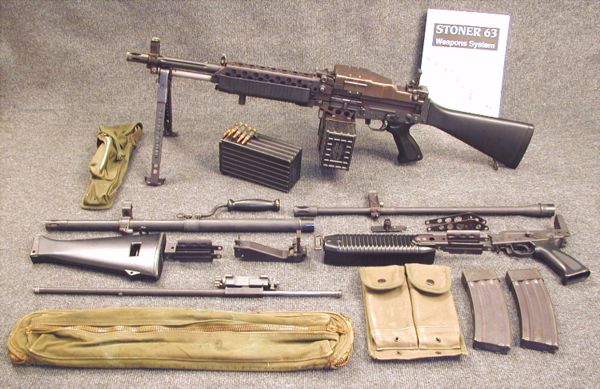
Seals adopted the Stoner 63 Commando variant as the Mk23 and used the gun up into the early 1980s. Of all the variants, the light machine gun version kicked the most ass. Heck, even by today’s standard, the 11.7-pound belt-fed machine gun is lightweight. The SEAL’s Commando variant weighed a mere 10.5 pounds.
Light Even Today
The Stoner 63 outfitted Special Ops troops with a lightweight machine gun. It was much lighter than the M60 and even lighter than the M249 SAW. Hell, FN just announced the Evolys light machine gun and it weighs 12.12 pounds.
The Stoner 63 was way ahead of its time, and it clearly demonstrated just how adaptable a firearm could be. We don’t have a modern Stoner 63, but we can certainly see its influence on light machine guns and squad support weapons.

Oddly enough, Eugene Stoner’s AR 15 kit has largely become the one receiver for every gun. The AR 15 lower receiver offers us rifles, carbines, SMGs, automatic rifles, DMRs, and even belt-fed LMGs. Regardless of its success or lack thereof, the Stoner 63 is a fascinating piece of machinery, and I’d be curious to see what a modern variant would look like.

